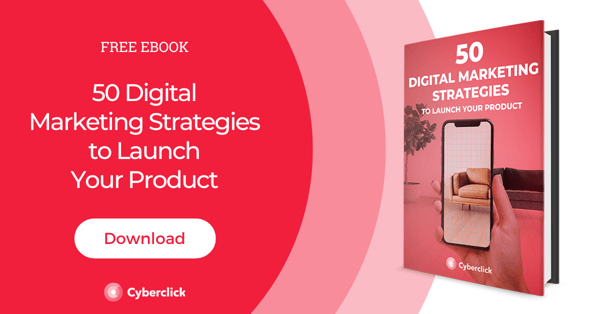Starting a blog for your business is a relatively easy process but should follow some important first steps. You might be asking yourself, “Are blogs still relevant for inbound marketing in 2021?” The answer is a resounding yes. Even in the age of video and TikTok/Instagram domination, blogging still has many benefits for businesses. 53% of marketers still use blogging as their primary type of content and around 409 million internet users read 20 billion blog pages every month. You can also make money from your blog!
So let’s discuss how to start a blog, from choosing your platform and theme to publishing great content.
Deciding on a Name and Topic for Your Blog
The first step in starting a blog is deciding on the topic that you want to write about. Obviously, your topic will be related to your business in some way. This can be product-related, general business or industry news, or stories and/or interviews featuring people in your industry. The point is to create content that’s actually of value to readers. Whether it answers questions or entertains, it needs to be compelling.
Once you have a general idea of your blog topic(s) it’s time to name your blog. Again, since this is a business blog it doesn’t have to be a stand-alone name. That being said, a clever and catchy name doesn’t hurt. Let’s say I’m a personal trainer: the blog on my website could be called ‘The Buff Blog’ or Beast Mode Blog’. These names give meaning and style to what otherwise has no personality or feeling if simply labeled ‘Blog’ on your site menu.
Choosing the Right Platform for Your Blog
When it comes to the technical side of starting your blog, it all begins with your platform. It’s not difficult but you do need to consider a few things before making a choice. You probably already have a website for your business and that website likely has a blog option built-in. If this is the case, then you can simply use what you have (or integrate WordPress which we’ll talk about below). Your blog and its capabilities will, however, be limited by the site design and can only be modified with existing options or by a developer.
If you’re looking for a more comprehensive blog platform with tons of plugins and themes, then WordPress is still your best bet. There are plenty of other options like Tumblr, SquareSpace, and Medium but none compare to the almighty WordPress. It’s very quick to set up and has great support. Plus, with WordPress being so popular, there are plenty of resources and fixes around the web. You can also integrate a WordPress blog into your existing website, keeping all their amazing features while maintaining continuity with the rest of your site.
If you need hosting for your blog domain (if it’s a standalone blog not connected to your site) then Bluehost is hard to beat. Bluehost is trusted by millions of domain owners, is very affordable, and has a super simple WordPress install option.
Choosing the Right Theme for Your Blog
Once you’ve decided on your blog platform, you'll need to configure your blog and choose a theme. Within the WordPress dashboard, you can begin by modifying your general settings such as your Site Title, Tagline, and Timezone.
Next and extremely important is going into Settings and then to Reading and make sure you leave “Discourage search engines from indexing this site” unchecked. This means Google and other search engines can crawl/index your blog and include it in SERPs.
Now you can set up your permalinks. These are the web addresses for the individual pages within your blog. Make sure they include keywords you’d like to rank for in search results.
WordPress has more than 10,000 blog themes to choose from so the question isn’t if there’s one you like, but how to narrow it down. Find a theme that matches and expresses your existing branding. Colors and style should be consistent. You can also add your logo to just about every theme to reinforce your branding.
Creating Compelling Content
Writing a blog can have numerous benefits for your business. Among them are:
- Boosting SEO
- Creating a catalog of content for social posts
- Establishing yourself as an industry expert
- Driving traffic
- Providing placement for CTAs
Without compelling content that people actually want to read, you probably won’t see many of these benefits. While making your blog look pretty and organized is important, it’s really about consistent quality content. So how can you regularly create compelling content?
To begin with, many people read blog posts that answer questions or solve problems for them. A lot of these posts fall into the following categories
- How-Tos
- Infographics
- Pillar Pages
- Ultimate guides
- Mini guides
- What Is...
- Listicles (X Best, X Most, X Tips, etc.)
These categories are popular because they provide clear and concise information for readers. Posts like How-Tos and Listicles save people time and effort since the research and organization of the information are already done. While some readers like long-form stories, most simply want the information they’re after in the fastest and most understandable way.
Not sure of what to write about? Check out your competitors' blogs and see which posts are popular. Now make your own version and make it 10X better.
How to Write a Great Blog Post
As with any form of writing you need to keep your audience in mind. Who are they and what are their interests? You’ve probably already done some keyword research for SEO and so you know what potential customers are searching for. With this in mind, you need to craft blog posts that answer their questions and provide value while also being entertaining.
All good writing begins with a hook. This means grabbing your audience’s attention from the get-go. This can be with an anecdote, a teaser of what’s to come, or a question that gets them thinking.
Next, your blog post needs to have a body that gives your readers that juicy information that they clicked for while maintaining an engaging style. This can be achieved through humor or punchy sentences. You can deliver the information in list form or in short, easy-to-read paragraphs. Images are also highly recommended to keep readers engaged and break up walls of text. Some people are visual learners and imagery brings everything together for them.
Finally, you want to bring everything full circle and finish your blog post so that it leaves readers with something to think about or even a follow-up action.
Creating and writing a blog for your business is still one of the best marketing activities out there. While consistently writing compelling content can be a serious challenge, the hard work pays off in terms of SEO and lead generation. Make blogging a priority for your brand in 2021 and see how content writing still pulls its weight in the world of digital marketing.
Inbound Marketing Strategist en Cyberclick. Graduada en Publicidad y Relaciones Públicas por la UPF. Responsable de la estrategia de inbound marketing, creación de contenidos digitales y posicionamiento web. Gestión del CRM con la herramienta HubSpot.
Inbound Marketing Strategist at Cyberclick. Helena holds a degree in Advertising and Public Relations from UPF. She specializes in inbound marketing campaigns, digital content creation and web positioning, with experience in CRM management and HubSpot.







Leave your comment and join the conversation